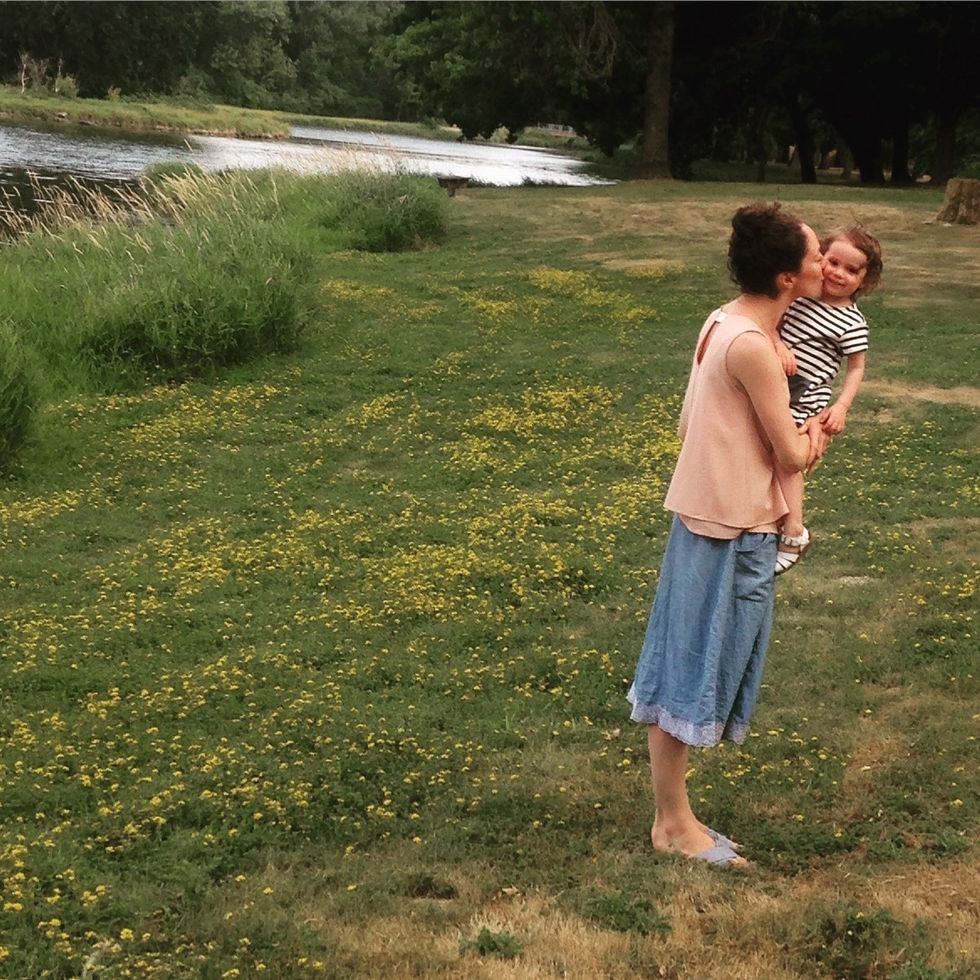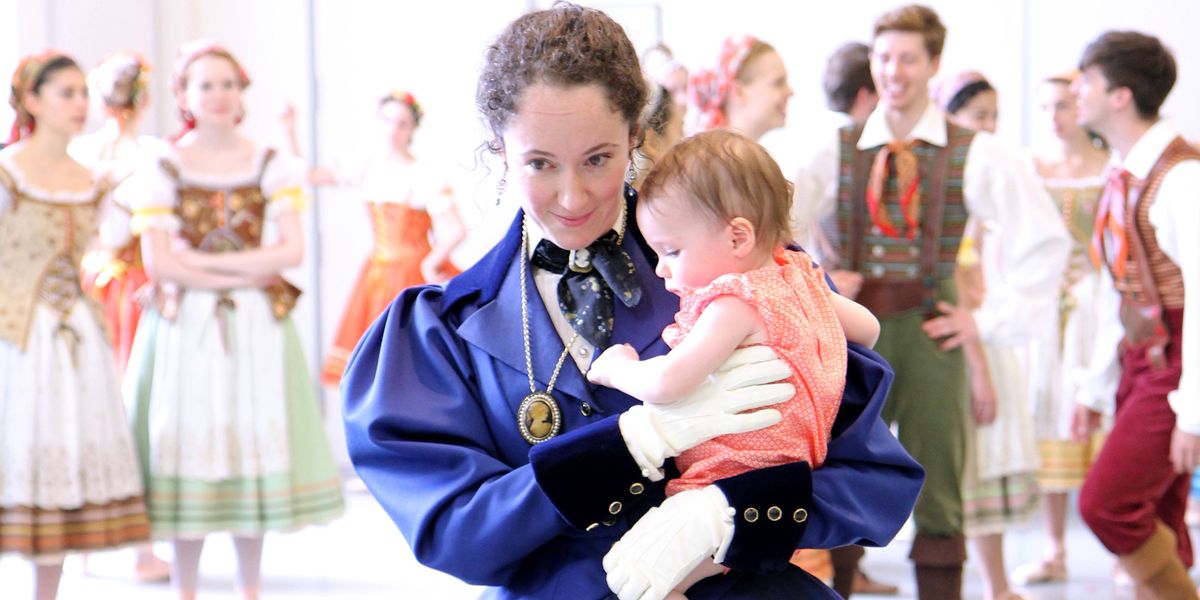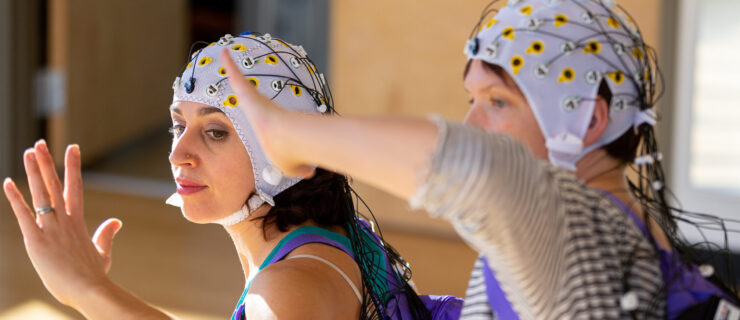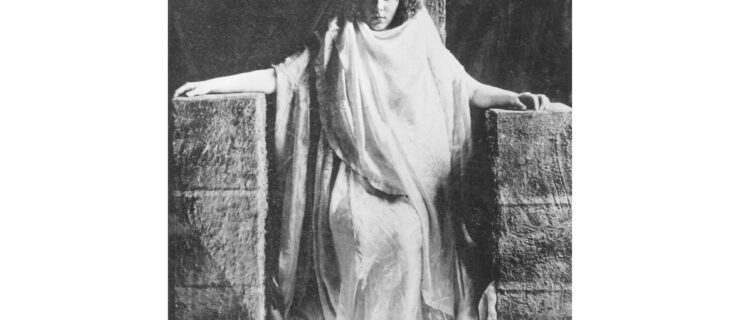The Reality of Dancing Postpartum: No, New Moms Don’t Just “Bounce Back”
Recently retired Pacific Northwest Ballet principal Sarah Ricard Orza shares her experience of returning to rehearsal after giving birth.
When you are pregnant there is a lot of celebration. You are uplifted and held, but afterwards the focus goes towards the baby. There is such a cultural expectation to just “bounce back,” yet our society is not set up to support mothers in all the ways they need.
In 2013, I had my daughter, Lola, at home with a birth doula. We don’t have family in the area, and though my mom came out for a while, we didn’t have a built-in support network. My husband, Seth Orza, a Pacific Northwest Ballet principal, did take some time off, but he performed just a week after the birth. So I hired a postpartum doula. Having someone to help with laundry, hold Lola so I could nap, and act as a sounding board was hugely beneficial. I knew I wanted to provide the same support for new families, and my experience led me to become a postpartum doula.
When I had my daughter, I was immediately bonded to her, but I had the common baby blues for the first couple weeks—feeling weepy and sleep-deprived, but unable to sleep due to an intense need to do everything for her. Thankfully, I knew it was not full postpartum depression.
The paid grace period at PNB is five months, and they are extremely supportive. You have to prepare not only to be back at work, but onstage performing. As a principal, I needed to be ready for lead roles. When I had Lola, I was very concerned about my looming return and when I was going to find time to exercise.
It’s helpful to set a loose recovery timeline for yourself. Be flexible and know it may change. Every dancer and body, every pregnancy and delivery, is different. The recovery from C-section takes longer than vaginal delivery, and, either way, you want to be cleared by your care provider before returning to physical activity. I advise a minimum of three weeks of hibernation after birth.
 Sarah Ricard Orza with Lola
Sarah Ricard Orza with Lola
Photo by Seth Orza, Courtesy PNB
After six weeks I began to move a bit, stretching at home or taking long walks. Having a team that knows my body helped with recovery. I added in Pilates sessions with a trainer and physical therapy, and gradually began taking ballet class. There was not a lot of control in my pelvic floor—something I’m honestly still working on! I was back in rehearsals in around three and a half months and had my first performance at four months.
Getting back to evening shows was difficult. I was up late the night before, then performing in the evening, and when I went home Lola was still waking up every three hours. I breastfed, so my breasts were larger than normal for a year. I had to pump a lot, like in the 15 minutes between class and rehearsals. During Sleeping Beauty, I had to pump between acts to fit into my costume for the second act. I danced Giselle when Lola turned 1, and I still didn’t feel completely in control of my body.
Before and after pregnancy, I decided to embrace the changes my body was going through. I was grateful it had created this human and continued to nourish her. But when your body is your tool and you are used to seeing yourself in the mirror one way, it can be hard. As a dancer there is an expected physical aesthetic, and a practical side, since your partner needs to lift you, so there are external pressures too. But I refused to feel badly that returning to my body’s pre-baby state was slower for me.
We now have many mothers in the company, and it’s inspiring to see dancers who tend to be perfectionists let go during this time. I’ve seen women be very gracious with themselves.
My body didn’t feel like itself until about one and half years after having Lola. After all, my body had taken nine months to build a baby. Why would I expect it to be “normal” overnight?




